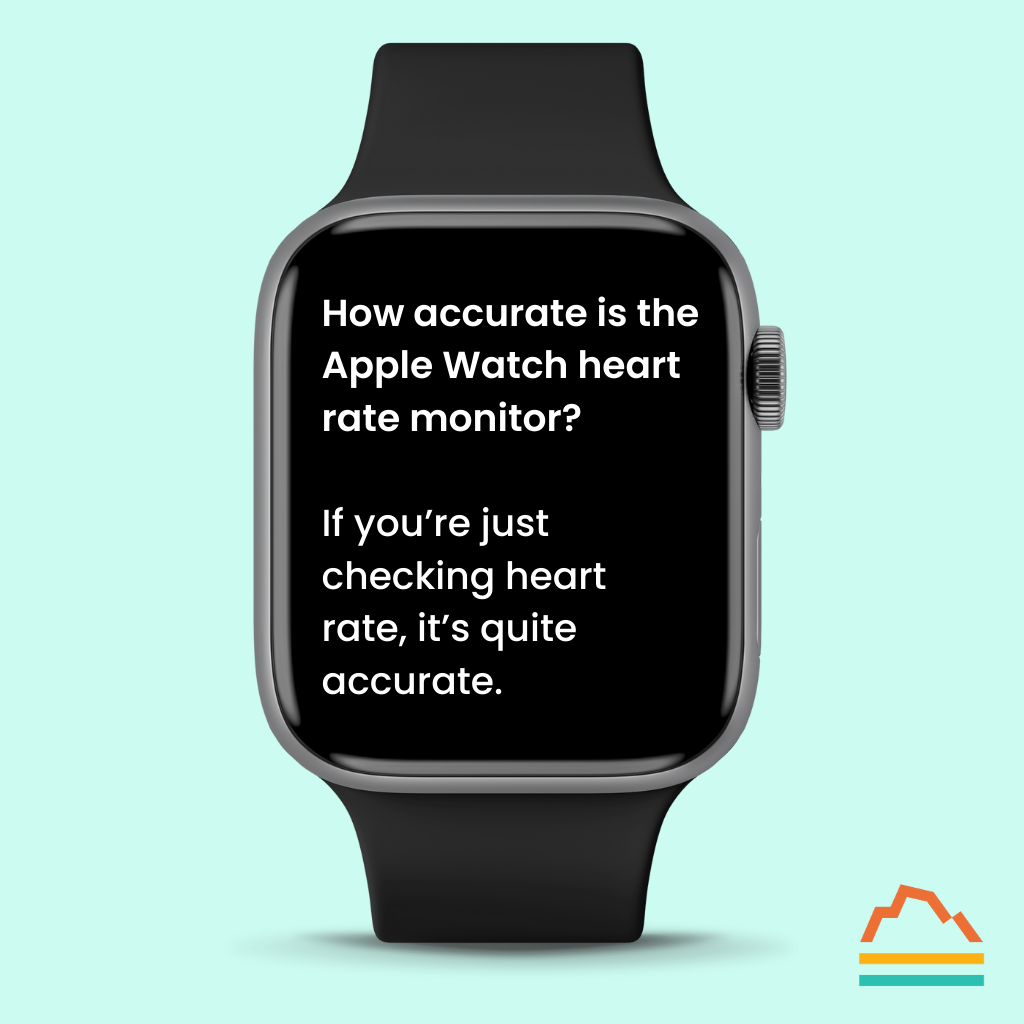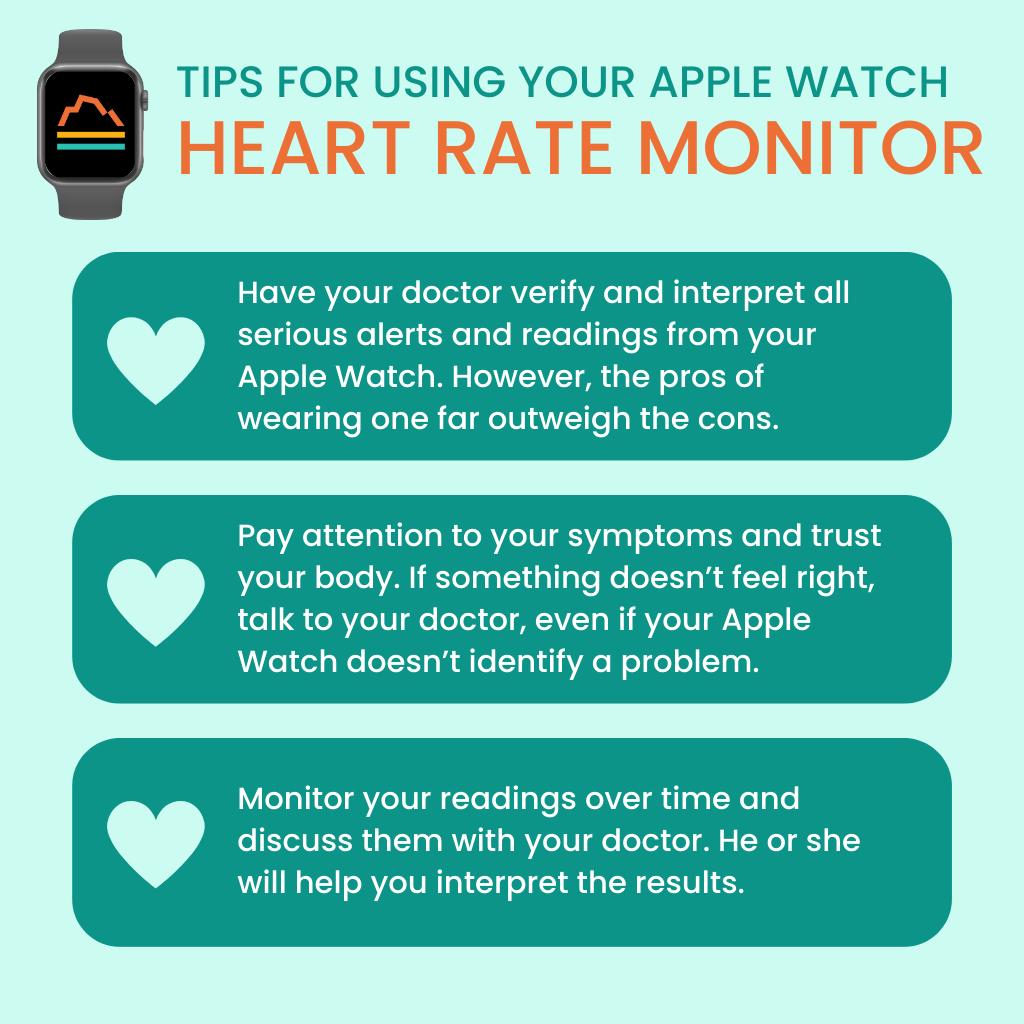We live in an age of consumer-driven healthcare. COVID accelerated this, and tech companies have jumped on board to meet the public’s demand.
The Apple Watch is part of this trend, and although it sits at the intersection of entertainment and medical technology, we can’t dismiss its usefulness. The hype regarding the Apple Watch’s accuracy as a heart rate monitor isn’t as exaggerated as you might think.
The Apple Watch detects heart rate through photoplethysmography (PPG), a technique in which LEDs illuminate a capillary and read volumetric changes in the blood. It’s quite accurate when used to measure heart rate and blood pressure, and we can expect additional applications of this technology as it improves.
But just how accurate is the Apple Watch heart rate monitor? When I investigated, I found some impressive data.
Real Examples of the Apple Watch Heart Rate Monitor
So, how accurate is the Apple Watch heart rate monitor? Here are a few examples.
I’ve had two patients in their 40s rush to consult me after alarms on their Apple Watches went off, indicating atrial fibrillation (A-fib). A-fib is a condition in which irregular electrical activity at the top of the heart leads to poor blood flow. It’s notorious for causing stroke and heart failure.
After these patients showed me the data from their Apple Watches, I connected them with a cardiologist who treated them. At the time the alarm sounded, they weren’t feeling anything abnormal, but thanks to the Apple Watch, they received treatment and prevented a serious problem.
Note: While the FDA hasn’t approved the Apple Watch for diagnosing A-fib, the device has been cleared for monitoring A-fib.
Beyond personal experience, I’ve read many stories about people whose Apple Watches alerted them to abnormal heart rhythms, which allowed them to receive life-saving treatments.
For example, in 2018, a high school senior’s Apple Watch alerted her of a heart rate of 190 bpm (beats per minute). When she got it checked out, she discovered she was in renal failure. More recently, in 2021, a nurse was alerted that her heart rate was 40 bpm, which led her doctor to find an atrioventricular block.
The Apple Watch also has a “fall detection” setting, which automatically calls 911 if it detects a fall and the wearer doesn’t move for several seconds. This is a potentially life-saving feature for anyone with low blood pressure or a fainting condition, or for older people who might not be able to get up without help.
What Heart Health Data Points Does the Apple Watch Provide?
The Apple Watch can detect more than just your heart rate, but your heart rate alone can reveal much about your health.
For example, a low heart rate can indicate an atrioventricular (AV) block, as in the case we mentioned above. These patients, who are at a greater risk of fainting, often need a pacemaker.
Conversely, a high heart rate can indicate various issues, including pulmonary embolism and pericardial tamponade. A higher-than-normal resting heart rate also puts you at a higher risk of cardiovascular disease. Staying aware of these conditions can help you strategize with your doctor accordingly.
You can also use your Apple Watch to track your heart rate variability, which is a fitness indicator that varies from person to person. Again, discuss any concerns with your doctor.
Believe it or not, your Apple Watch can even record an EKG (electrocardiogram), sometimes also called an ECG. This test detects irregular heart rhythms and can indicate any number of issues, including atrial fibrillation (A-fib). (If you take an EKG with your Apple Watch and the results concern you, consult your doctor immediately.)
In 2019, the New England Journal of medicine published a study that followed 419,297 Apple Watch wearers over eight months. Eighty-four percent of irregular pulse notifications participants received during this time were accurate. That was four years ago.
This technology is constantly progressing. So, what about in 2023? How accurate is the Apple Watch heart rate monitor now?
How Accurate Is My Apple Watch Heart Rate Monitor?
How accurate is the Apple Watch heart rate monitor today? If you’re only checking heart rate, it’s quite accurate.
If you’re looking for other measurements, like certain arrhythmias, take the readings with a grain of salt and rely on your doctor’s advice — especially regarding ventricular arrhythmias, which the Apple Watch doesn’t identify reliably.
False positives can lead to anxiety and unnecessary ER visits. It’s best to contact your primary care physician and discuss your concerns, if possible, rather than run to the hospital — unless you physically feel that something is wrong. If it’s a true emergency, drop everything and go.
Remember, the Apple Watch, like any over-the-counter technology, has limitations and requires appropriate interpretation.
Today’s Takeaways
- Have your doctor verify and interpret all serious alerts and readings from your Apple Watch. However, the pros of wearing one far outweigh the cons.
- Pay attention to your symptoms and trust your body. If something doesn’t feel right, talk to your doctor, even if your Apple Watch doesn’t identify a problem.
- Monitor your readings over time and discuss them with your doctor. He or she will help you interpret the results.

Waheeda Hiller, MD
For over 20 years in Internal Medicine, Dr. Hiller has dedicated herself to providing unparalleled care to patients. She joined Banner Peak Health in 2023 as a concierge physician to better serve patients with the depth of thought, knowledge, and compassionate care they need to live the healthiest lives possible.





